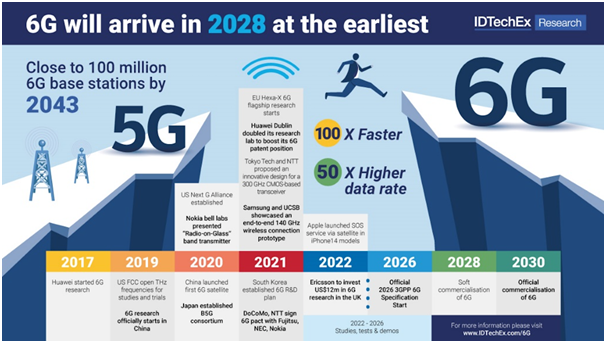Bharat 6G vision document
Context: Recently the Prime Minister unveiled the Bharat 6G Vision Document, a starting point for policymakers and the industry to gear up for the next generation of telecommunication.
Why a 6G vision document?
- The government has indicated that it wants to accelerate India’s wireless data consumption and assume leadership in setting the standards for 6G in the coming years.
- This may involve everything from encouraging local manufacturing of telecom gear to supporting Indian companies and engineers in international discussions around standardisation.
- Another key motivation is the delay in previous generations of telecommunication technology rolling out in India — 5G started rolling out in India years after countries like South Korea and the U.S. had already blanketed their major urban areas with high-speed wireless connectivity. India does not want a repeat of that.
- Another reason is pure physics: frequencies generally increase in newer generations of networks, but the lower the frequency, the longer a cell signal can travel.
- With increasing data usage, lower frequencies in 4G networks may not physically be able to keep up with the demand for traffic.
- Right now, the spectrum is congested, particularly in the low and mid-bands where the propagation characteristics are favourable,” More data can travel in higher frequencies, which is the basis for 5G architectures where base stations with low coverage took the place of a single larger cell tower.
- Some indicative goals are to
- guarantee every citizen a minimum bandwidth of 100Mbps
- Ensure every gram panchayat has half a terabit per second of connectivity
- Blanket the country with over 50 million internet hotspots, with thirteen per square kilometre.
How will 6G be different from 5G?
- For consumers, websites will load faster, videos will look better, and files will download faster, as has been the case with every new generation of technology.
- Businesses and governments are still on the verge of how best to leverage 5G to reap the benefits of high-precision low-latency applications with these new connections.
- Holograms and robotic surgery are already riding on 5G networks. Like 5G, it will depend largely on how different groups plan to use the spectrum.
- According to the vision document, satellite constellations will join telecom towers and base stations, integrating networks and extending them to rural areas.
- Some of the innovations that the government envisions as 6G-powered connectivity boosters are solutions that already exist in other forms.
- For instance, satellite internet in remote areas is a solution that the government can instantly approve by granting firms like Elon Musk’s SpaceX and Bharti Airtel-backed OneWeb the administrative clearance to begin offering their services.
- Like DTH satellite dishes, setup is minimal as the satellites are already in the sky. However, administrative clearances lag behind.
- At least two parts of India have already relied on satellite internet for decades. The Andaman & Nicobar Islands relied on 1Gbps links to connect to the outside world.
- The situation improved vastly after the islands were connected to Chennai by an undersea cable in 2020.
| Practice Question
1. How is India planning to roll out its 6G plan? How will it be better than 5g? |




